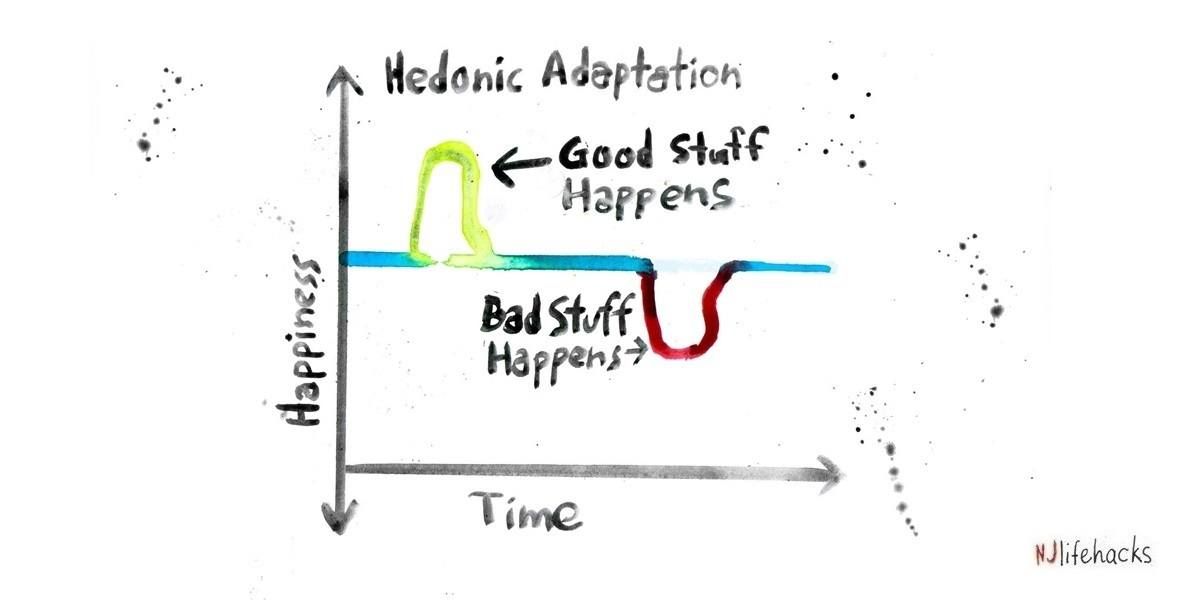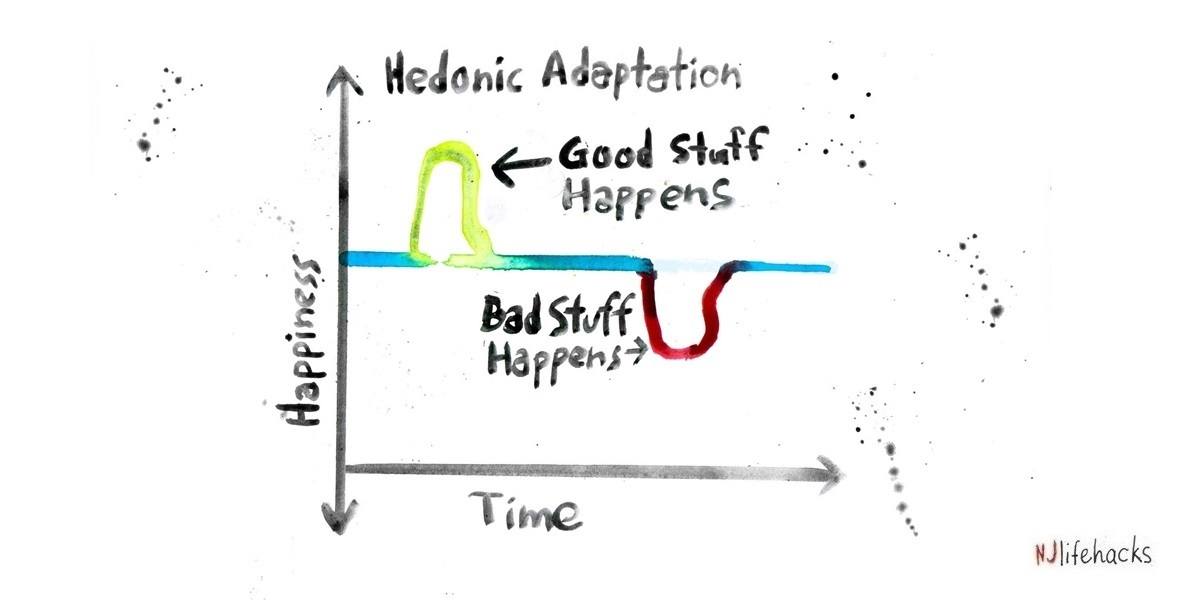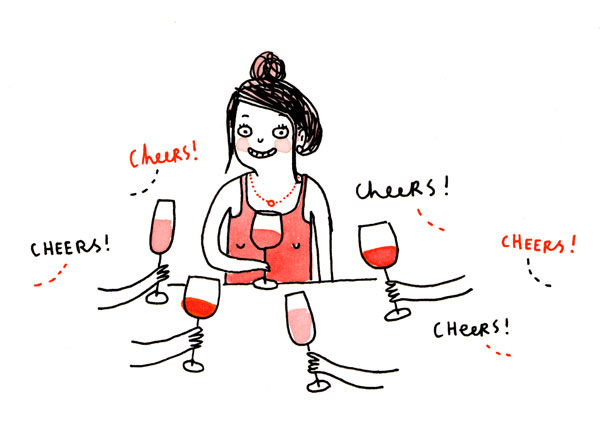
Choosing different wines can make you happier, it’s science.
What if I tell you that frequently choosing different wines can make you happier? You think it’s a bold statement, don’t you? It is actually backed up by rock solid science. Drinking your usual, regular, ever favourite Cabernet or Chardonnay is not making you any happier. Believe me. Even if you enjoy it. Here is why.
When good things happen, we feel positive emotions—like excitement, relief, pride, and of course, happiness. As you feel good, content and happy while tasting and savouring your glass of “usual” Chardonnay.
But the problem is, happiness doesn’t usually last.
Psychologists call this phenomenon hedonic adaptation—the idea is that no matter how good something makes us feel, most of the time we drift back to where we started, emotionally-speaking.

In the study “Lottery winners and accident victims: is happiness relative? P Brickman, D Coates, R Janoff-Bulman” researchers showed that despite their initial euphoria, lottery winners were no happier than non-winners 18 months later. The same tendency to return to “baseline” has been shown to occur after marriage, voluntary job changes, and promotions—the kinds of things we usually expect to change our happiness and well-being for the better in a permanent way.
Why can’t we make happiness last? Psychologists (and renowned happiness experts) Kennon Sheldon and Sonja Lyubomirsky argue in a their paper that our hedonic adaption occurs for two reasons.
When a positive change first happens (say, you move into a great new house), there are usually lots of positive events, such as you enjoy your new sofa, take a long bath in your first soaking tub, and appreciate the light of your new living room.
But over time, there are fewer positive events to experience, because you get used to all the home’s features, and after a while, you just don’t notice them anymore. With fewer positive events, and thus fewer positive emotions (excitement, pride, happiness), your newfound well-being can’t be sustained.
Translating the concept to wine: think at the first time you had your favourite Cabernet, you were very excited, staring at the glass at every sip saying things like “omg, this is mind-blowing”, “this is the most incredible Cab I have ever had!”. Now think about last night when you had the very same favourite Cab with your meal: I bet you were not jumping on the chair for the happiness, weren’t you? You got used to the flavours, you know what to expect, you somehow take it for granted.
The second reason happiness fades is that even when positive events continue the change begins to simply be seen as the “new normal.” And as a result, your aspiration level shifts, you need more, you need better.
Getting back to our Cab: you start to think that maybe it isn’t so special, you need more because you reset your aspiration level, your expectations are higher, your point of reference shifts. And boredom kicks in.
So what can we do to make our positive feelings, our momentary happiness last longer?

Variety and diversity are the most potent weapons against adaptation because we don’t get “used to” positive events when our experiences are novel, or unexpected all the times.
Positive changes that are experienced in a variety of ways are more likely to lead to lasting happiness.
So you’ll be happier with your new spouse if you spend time doing new things together, rather than getting stuck in a boring routine, for example. You’ll be happier at your job if you are able to tackle new tasks and challenges.
The happiness you get from doing anything will fade if you do it the same way every day, your comfort zone is not making you happier, or at least is not making your happiness long-lasting.
Speaking of wine and transferring these concepts once again to our preferred grapes nectar: we learned that if you drink the very same delicious Chardonnay or Cabernet over and over again it won’t taste as good as the first time, your brain will get used to the flavours and the smells and the experience will be less pleasant every time. But you will stick to it because it’s easier, it’s your comfort zone, it’s your normal, it’s your routine, it feels safe.
Well, after all we have just explained about hedonistic adaptation and the possibility to stretch your happiness, there is one simple solution, one step you deserve to take: mix it up, dare to drink different, choose new wines, explore the wine shop aisles with curiosity and give your senses a chance to enhance your happiness.
Science also tells us that investing in experiences rather than in material goods is a way to increase our happiness. Here the research of Van Boven, L., & Gilovich, T. (2003). To Do or to Have? That Is the Question. Journal of Personality and Social Psychology.
We tend to get used to our new car, to that designer purse or that pair of expansive leather shoes, because these things stick around. Experiences on the other hand gives us positive feelings in a very limited time and then they fade, we enjoy them more because they don’t last and our hedonistic adaptation has no way to thrive. Wine is a special good: it’s something you buy but most of all something you experience with all your senses. No surprise a glass of wine can make us happy: the taste, the smell, the excitement of a wine trip, the dream of the vineyards or the surroundings. Wine makes us travel down the path of sweet memories.
So, did I give you enough reasons to change your wine purchase habits toward happier experiences?
I know it could be confusing and scaring stepping out of your comfort zone and drinking something new, there is always a chance you won’t like it. But isn’t the chance you will love it even more than you regular Cab worth a try? Isn’t the possibility to increase your wine happiness a prize worthy to risk for?
Well, let me help you out here with a list of alternative, less known wines compared (for similarity of taste and characteristics) to the most sold, most popular wines in the United States. Below I list some examples available in the U.S. for purchase online. This is not a sponsored post, I don’t do any, these are just my genuine suggestions.
TOP SOLD WINE VARIETALS IN THE U.S.
- Cabernet Sauvignon ($2,575 million of net sales in 2019)
- Chardonnay ($2,549 million)
- Pinot Grigio ($1299 million)
- Pinot Noir ($1,055 million)
- Sauvignon Blanc ($915 million)
AND SOME ALTERNATIVES TO SPIKE UP YOUR WINE HAPPINESS
If you like Cabernet Sauvignon try this instead:
- Masciarelli Marina Cvetic Montepulciano D’Abruzzo Montepulciano and learn more about Abruzzo wine region here
- Tenute Lunelli – Montefalco DOCG Sagrantino Carapace – read the story of this wine and the iconic winery in Umbria here
- Cantele NegroamaroTeresa Manara IGT Puglia
If you like Chardonnay try this instead:
- Donnachiara Fiano di Avellino DOCG
- Dario Princic Ribolla Gialla Venezia Giulia IGT, Friuli-Venezia Giulia
- Cantina Sanpaolo Greco di Tufo DOCG Claudio Quarta Read the story of Claudio Quarta vignaiolo here
If you like Pinot Grigio try this instead:
- Tenuta Roveglia Vigne di Catullo Lugana Riserva and discover more about Lugana in this article here
- Alois Lageder Pinot Bianco Alto Adige and learn more about Alto adige varieties here
- Pacherhof Kerner, Trentino-Alto Adige, Valle Isarco
If you like Pinot Noir try this instead
- Travaglini Gattinara DOCG, Piedmont
- Cantina Terlano Lagrein Porphyr Riserva, Trentino Alto Adige
- Planeta Eruzione 1614 Nerello mascalese, Sicily and learn more about Sicilian wines here
If you like Sauvignon Blanc try this instead
- Verdicchio Dei Castelli Di Jesi Classico Riserva Docg “san Paolo” 2016, Pievalta and learn more about le Marche region wines here
- Sicilia Grillo Doc “sursur” 2019, Donnafugata
- Li Veli Verdeca Askos, Puiglia, Valle d’Itria and learn more about valle d’Itria here


